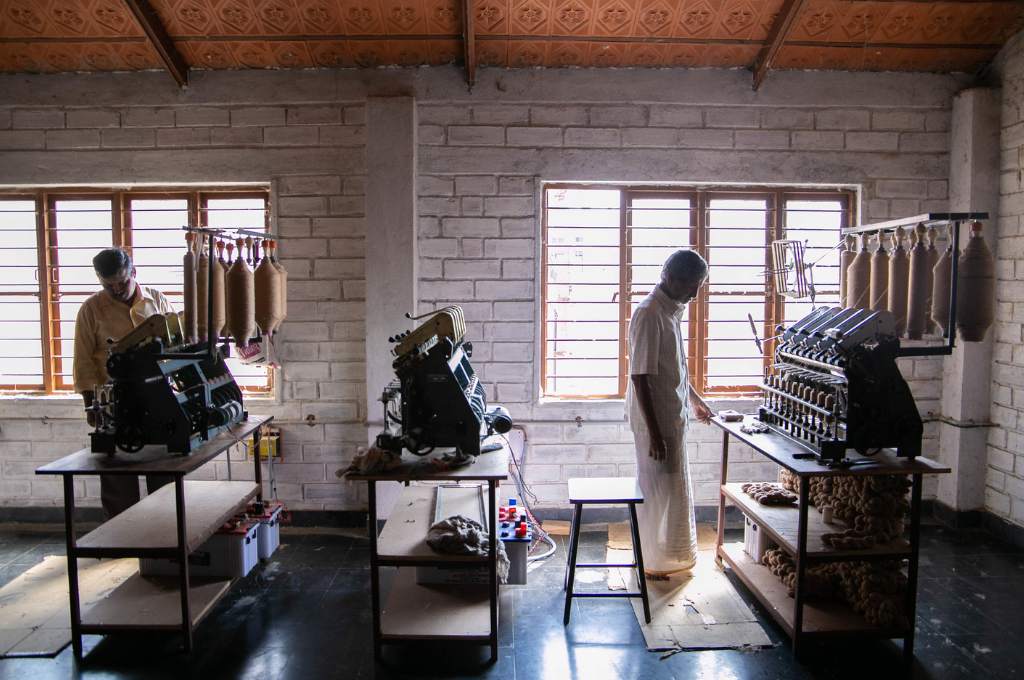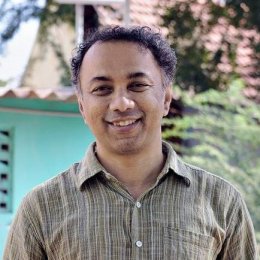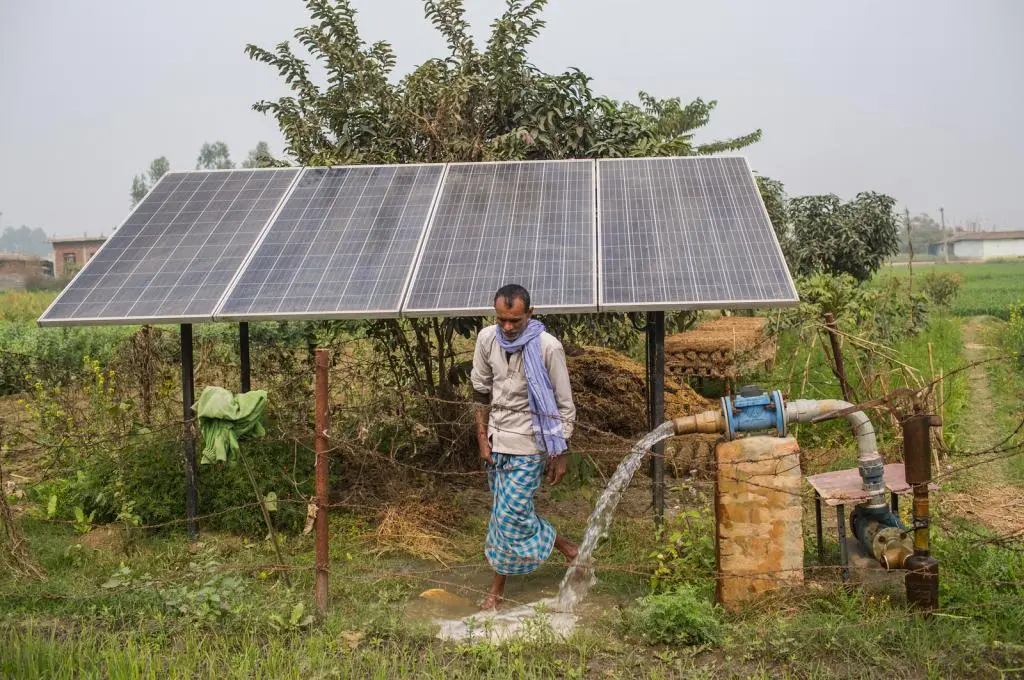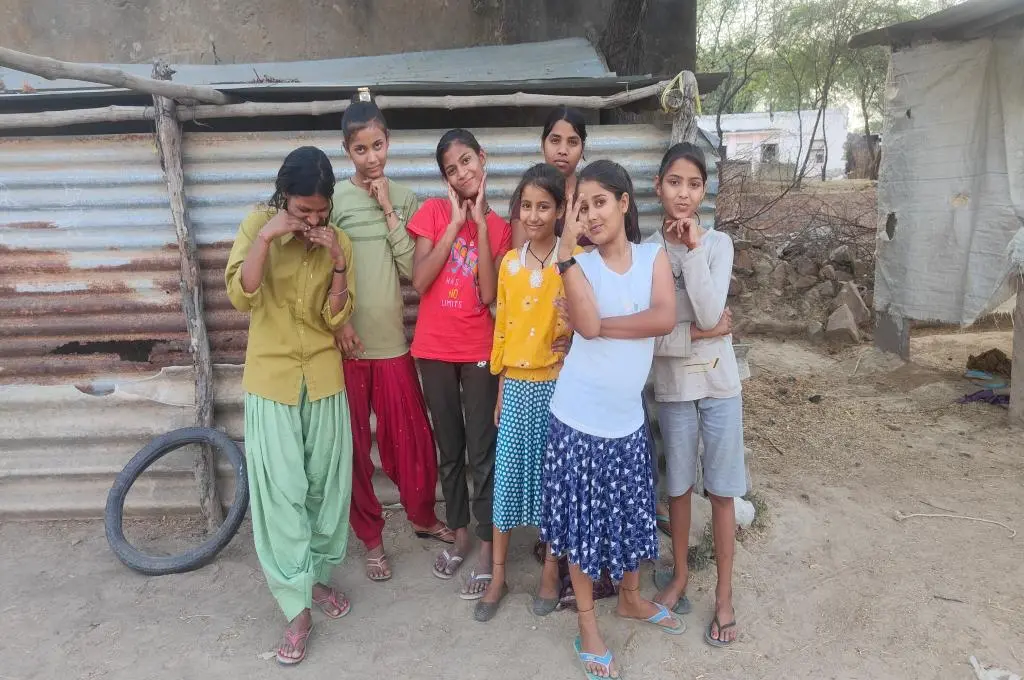As India works towards meeting the developmental needs and aspirations of its people, there is an opportunity to do this in a manner that also makes us climate-resilient. Energy is critical for development—the backbone of thriving economies—but it’s also a key contributor to climate change. Decentralised renewable energy (DRE), a source of solar or other clean power at the site where it is needed and consumed, is a powerful enabler for both our developmental and climate action goals. If catalysed in an inclusive manner, the approach presented here can drive progress and prosperity in an equitable manner.
The emphasis on scaling renewable energy (RE) is necessary, but the process we adopt to achieve this is key to sustaining the impact on last-mile communities. If we take an approach that hinges on energy supply, the focus becomes limited to replacing energy sources based on unit costs. It assumes that the need for and affordability of energy exist. However, in developing economies, the affordability of energy is a big challenge. So we need to reimagine the problem statement by making affordability and the need for energy central to the energy discussion.
The DRE approach is not about energy supply but the application of energy in agriculture and health, and outcomes in productivity, income, and the well-being of last-mile communities. Instead of making solar energy the centrepiece of our conversation—a solution we fit to a problem—we should transform our narrative to centre on developmental outcomes, shifting our attention from energy to the sustainable delivery of solutions for rural and marginalised communities.
This shift in perspective occurs when we focus on the demand side, that is, the individual or unit that needs electricity. Smallholder farmers and owners of home-based and micro businesses—such as blacksmiths, traditional millers, rope makers, tailors, dairy farmers, and barbers—are more concerned with how to use electricity to run their business profitably than with solar panels or specific energy sources. Many rural households using livelihood applications such as sewing machines, silk-spinning machines, or rice-pounding mills are thinking about how to make their enterprise financially viable, with energy expenditure being a component of their financial plan. For instance, for an entrepreneur in Meghalaya, producing a certain quantity of spun Eri silk with her machine in a month may be the priority.

Decentralised renewable energy is the solution
Decentralised renewable energy can be implemented and designed in a modular fashion based on users’ needs. It allows for the creation of localised energy sources that directly benefit households and enterprises. This approach avoids the high costs of large solar farms and extensive grids and empowers individuals and communities by making them self-reliant in energy production.
When planned strategically, a decentralised solar rooftop set-up is the least expensive source of electricity for microenterprises.
It can also turn out to be the most economical option for micro and small entrepreneurs. It is a myth that decentralised renewable energy is expensive. When planned strategically, a decentralised solar rooftop set-up is the least expensive source of electricity for microenterprises. From the end user’s perspective, a productive asset, like a roti-rolling machine or a loom, and solar equipment may involve an initial investment, but over time, it results in reduced energy expenses, even with higher energy consumption. Additionally, based on their cash flows, the end user can achieve business viability faster, owing to better productivity. The productive use of equipment becomes viable through business profits enabled by the integration of decentralised renewable energy.
Our experience at SELCO indicates that with decentralised renewable energy, a solar-powered sewing machine becomes economically viable in less than a year, a solar-powered silk-spinning machine in two, and the operations of a dairy farmer in a year and a half. A dairy farmer can even improve milk yield with solar-powered hydroponics, milking machines, and chillers. This increases their earnings and profit, making solar energy an advantage and a productive asset for them.
Decentralised renewable energy can be the ideal solution in regions where there is no electricity, where it is unreliable, and where it is available but expensive. It brings energy to the last mile, and in the required quantity. With independent solar panels on each roof, entrepreneurs become owners of their energy units and use them according to their needs. This method facilitates both the decentralisation and scale of renewable energy.

Tailoring renewable energy solutions for livelihoods
We have an opportunity to change the economics of renewable energy. A few factors can catalyse this outcome.
1. Holistic design
Sustainable thinking should start on the first day of the intervention. When designing a programme, it’s essential to have the engineer, the architect, the financial expert, and the anthropologist together at the table from the beginning. The problem statement should be defined from the end user’s perspective, forming the basis for experts to collaborate in solving it.
For instance, silk weaving is a major source of livelihood in the northeastern region of India, and so we partnered with innovators to redesign silk-spinning machines to run on solar power. However, the problem as stated by the women in the community was that manual silk spinning was time-consuming and drudgery-filled. Simply pitching rooftop solar panels would not have helped, so we made a technical intervention to the spinning machine that facilitates faster, easier silk spinning.
Elsewhere, we may have to put on a marketing hat. In a tailoring enterprise, if the entrepreneur needs to earn more, the answer might lie in helping the tailor diversify her offerings to include embroidery in addition to sewing. Not only would the use of energy (and the corresponding appliance, that is, the type of sewing machine) change, but a new market linkage would have to be developed and a training expert would need to pitch in with solutions. We should, therefore, address the hyper-specific challenges of the end users.
We should bring architectural and design innovation to find solutions to the problems of small enterprises.
Pushing design thinking even further, we should also bring architectural and design innovation to find solutions to the problems of small enterprises. A kirana store or a barber shop in a village may have only a 200-square-foot space, but so would a high-end store in Tokyo or Manhattan. Why can’t the barber shop be planned with as much innovation and aspiration as its counterpart in cities? Focusing on built environment design makes livelihoods aspirational—an approach that can be integrated with solutions oriented towards rural and marginalised communities. If a restaurant currently seats 10 customers, we can optimise the layout, improve insulation and airflow, and integrate solar energy to increase the seating to 14. With creative thinking, we can enable a one-bedroom household with an Eri silk–spinning machine, a two-bedroom household with a roti machine, or a joint family with a rice mill to thrive financially.
2. Financing
Sustainable design puts us on the right track, but the key to scaling decentralisation and solar solutions is financing. The end user needs to make their enterprise economically viable over a certain period. We can enable users to buy the asset, which reduces energy costs over time, by identifying sources of financing—for example, bank loans and appropriate government schemes such as the Pradhan Mantri Formalisation of Micro Food Processing Enterprises (PMFME), Prime Minister Mudra Yojana (MUDRA), Prime Minister’s Employment Generation Programme (PMEGP), and Mission for Integrated Development of Horticulture (MIDH). At SELCO, we partner with the appropriate local banking institutions and help them tailor financial products based on the user’s cash flow.
In North Karnataka, for instance, we first worked with entrepreneurs to increase the output of milking machines. Then we approached a bank to create a loan for their equipment. Once that financial product was institutionalised at the bank, it led us to think about other equipment that could be bought at the same price, for instance, solar-powered chips-making machines, flour milling machines, or a pottery wheel. Both banks and equipment owners can see that the solar rooftop set-up (which includes the equipment) is cost-effective over time. In Dharwad, for example, a solar-powered roti-rolling machine becomes viable within 24 months of financing, even without subsidies.
The challenge lies in finding and creating innovative financing options that suit the business growth and cash flows of the last-mile entrepreneur.
3. Energy efficiency
While innovation is needed in financing DRE solutions for end users, innovation on the engineering side is also necessary. Solar energy can seem expensive when machines use energy inefficiently. A baby warmer that can run on 150 watts should not consume 600 watts. A building should not be designed without considering the use of natural lighting during the daytime. If a sewing machine is not energy-efficient, the source of electricity should not be blamed. If we don’t solve the problem of energy efficiency and optimisation and look at only the energy source in a siloed manner, we will create a future energy affordability issue for our communities. We need better silk-weaving machines, hammer mills, agarbatti rollers, and baby warmers; and we need engineers, designers, and manufacturers to create them.
4. Training
To achieve sustainable designs of DRE solutions, financing, and energy efficiency, there is a pressing requirement of capacity to carry out the same. We need the skills to design better machines, buildings, and business plans. Our educational institutions play an important role in ensuring that students are equipped with divergent, non-compartmentalised thinking to be able to deal with the complex, modern challenges of poverty and climate change. These challenges cannot be approached in isolation, and this orientation should be fed into our teaching methodology across education systems, including vocational and skilling institutes. This calls for a consolidated approach that addresses the entire ecosystem. This is why energy practitioners need to work with the ministries of agriculture, rural development, livelihoods, health, and education, and not just with the Ministry of New and Renewable Energy.
Vocational schools at local levels present an opportunity to nurture this demand-centric and holistic approach for creating renewable energy solutions for livelihoods. Industrial Training Institutes (ITIs) and Rural Development and Self Employment Training Institutes (RUDSETIs) can become pools of innovation, as they often cater to representatives of the 800 million people in rural and marginalised settings who own the problems we are trying to solve. These institutions can help democratise our approach to sustainable solutions. Policies can transform these spaces to champion decentralised innovation. If masons, for instance, are trained in design thinking, a few of them will become designers and architects—bringing in not only the supply of construction to the communities but also responding to the demand of building use.
There are a few successful models for solar-powered livelihood—in Guwahati for sustainable silk-weaving, in Karnataka for roti-rolling, in North Karnataka for rice threshing, among others. Farmers in some rural areas are using solar energy for cold storage of their produce. North Karnataka has secured financing for decentralised renewable energy. All public health centres in Meghalaya, Mizoram, and the Bodoland region of Assam are going to be 100 percent solar-powered. We already have these pockets of excellence. Let us collate and replicate these models and processes. India can then set a precedent for other parts of the world that need decentralised solutions for development, all of which can be catalysed by decentralised energy.
—
Know more
- Read this article to learn how grassroots nonprofits can help support DRE-based livelihoods.
- Listen to this podcast to know how decentralised renewable energy can foster an entrepreneurial spirit in rural India.
- Browse this report to understand how India’s DRE policies compare with the rest of the world.






